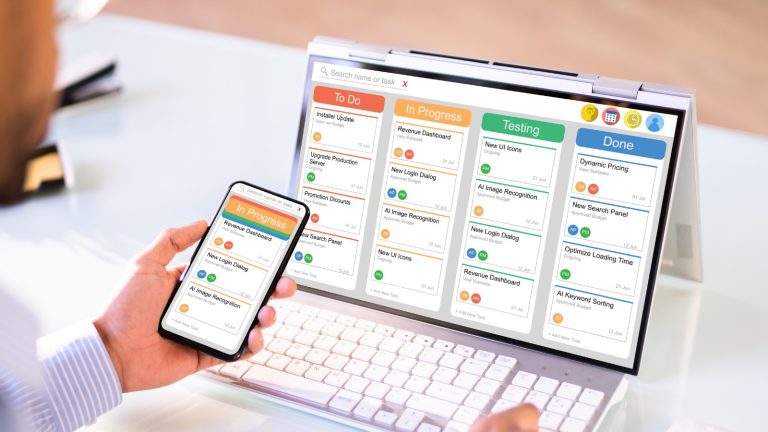In the realm of project management, there are various project methodologies in the scenario. Although all of them focus on certain aspects of the project, not all can cater exactly to the requirements of every project. This is mainly because every project has unique requirements and focus. Since the experts found that traditional project methodologies do not cater to every need of the project, they invented a robust solution known as ‘Agile Project Methodology’ to fill the gaps in traditional ones.
In this article, we explore the concept of agile project methodology and understand its importance for the Singaporean project management framework.
We will discover
What is Financial Planning?

- Among many other methodologies, this adaptable method of project management puts more emphasis on feedback loops and continuous enhancement than it does on documentation, giving priority to final product incrementation.
- It gives businesses the flexibility to produce value constantly throughout the development lifecycle and adjust to changing requirements.
- What makes this one so unique? The answer is simple. The latter integrates Agile principles with a structured framework, making it suitable for larger organisations with established project management structures. It also establishes continuous communication and collaboration among the project’s team members, ensuring the timely delivery of high-quality products.
- The DSDM Agile Project Framework, which was jointly developed by APMG and the Agile Business Consortium (formerly the DSDM Consortium), is the foundation of the agile approach. It offers a workable and scalable way to start and manage projects that are both agile and easily integrated with traditional project management techniques.
- Where does this concept come from? If you fly back to its history, you will see that this was originally designed for the software development industry; it was first launched in 2001. Since its beginning, agile project management has developed over time and gained popularity among project managers in many sectors.
- If simply said, agile project management is a progressive, gradual approach that allows companies to meet the demands of the contemporary workplace. It is made up of several approaches, all of which are predicated on the ideas of adaptability, openness, excellence, and ongoing development.
- Now you might understand why this has been received so well in the project management scenario. Managers can work more easily and have more control over their projects because of Agile’s strengths. This is a management style that is genuinely exceptional because it prioritises meeting project deadlines and providing customers with high-quality and valuable outcomes while adhering to project limits.
Key Benefits of Using Agile Project Methodology

Greater Overall Product Quality
Why would a PM opt for this one? Greater overall product quality would be the number one reason, for sure!
There are several interconnected factors when it comes to its mechanism. Agile emphasises iterative development cycles, enabling continuous feedback and adaptation.
This repetitive approach allows for frequent testing and validation of features, catching defects early in the process.
Also, Agile promotes collaboration among cross-functional teams, encouraging collective ownership and accountability for product quality.
As it can prioritise customer satisfaction and deliver working increments of the product regularly, Agile ensures that the final output aligns closely with user needs and expectations. Not only that, but Agile’s focus on communication and transparency also allows for the identification and prompt resolution of issues. This prevents them from escalating into larger problems later in the development cycle.
In the end, the combination of repetitive development, collaboration, customer-centricity, and proactive issue resolution inherent in Agile methodology provides businesses with the capacity to make the project successful on a fast track.
Allowing Managers to Take Better Control
How does this offer the fullest control to PMs of a certain project?
Firstly, Agile provides managers with enhanced visibility into the project’s progress through regular iterations and transparent communication channels. This helps them identify potential issues early and make informed decisions to mitigate risks effectively. Plus, this promotes adaptive planning. This means managers have the ability to adjust priorities and resources swiftly based on changing requirements and market dynamics.
This flexibility empowers managers to allocate resources efficiently and optimise team productivity. On the other hand, Agile creates a culture of collaboration and self-organisation within teams, reducing the need for micromanagement.
Managers can concentrate on strategic planning and getting rid of roadblocks by letting staff make decisions on their own and helping them when needed. Moreover, managers can encourage team learning and continually implement process improvements by hosting retrospective sessions, which are a key component of Agile’s continuous improvement philosophy.
Project Predictability Enhancement
The latter is a significant benefit of using Agile project methodology due to its emphasis on iterative development, frequent feedback loops, and transparent communication, as we mentioned before. If you are still not convinced, then let us justify this statement in the section below.
Agile’s iterative approach allows teams to break down projects into smaller, manageable increments, each delivering tangible value. Unlike traditional methods, agile focuses on providing workable increments on a frequent basis, which allows stakeholders to see project progress early and modify expectations accordingly.
Furthermore, Agile emphasises the need for continuous feedback from stakeholders. This allows teams to course-correct and adapt as needed throughout the project lifecycle. This adaptive approach enhances predictability by reducing the likelihood of major surprises or deviations from the original plan.
Agile likewise encourages the use of metrics and empirical data to monitor progress, spot bottlenecks, and more precisely predict future results. This is actually the basis for a culture of transparency and collaboration. Don’t you see?
It puts more weight on delivering predictable results while remaining responsive to changing requirements and market conditions.
Heightened Flexibility
This methodology is what allows project workers to respond quickly to changing requirements, market conditions, and customer feedback. This is made possible by prioritising flexibility throughout the project lifecycle. With Agile, projects are broken down into smaller, manageable iterations, and you know this already. This capacity allows workers to adjust priorities and resources as needed between iterations.
This flexibility lets teams accommodate new information, address emerging risks, and seize opportunities more effectively. Additionally, Agile encourages a collaborative and empowered team culture where choices are made quickly at the team level. This indeed eliminates the need for formal change management procedures and official approvals.
In addition, Agile frameworks like Scrum and Kanban provide mechanisms for continuous improvement, allowing teams to reflect on their processes and make adjustments iteratively. Agile project methodology helps companies remain competitive in dynamic contexts while producing high-quality products that satisfy changing user demands. It does this by embracing change and placing a priority on customer value.
It is driving through uncertainty with confidence, after all.
Ongoing Improvement
Agile encourages a culture of learning and adaptation within the project. This is where workers regularly reflect on their processes and outcomes to identify areas for enhancement.
Agile teams collect insights from each phase using techniques like sprint retrospectives, recognising accomplishments, and pinpointing areas for development. This feedback loop allows teams to implement changes incrementally, refining their approach with each iteration.
Also, Agile frameworks prioritise accessibility and collaboration, allowing cross-functional teams to freely exchange best practices and information. When carrying a mindset of continuous improvement, workers cultivate a culture of innovation and excellence. This is where individuals are empowered to experiment, learn from failures, and evolve their practices over time.
Agile approaches also support evidence-based changes by promoting the use of metrics and empirical data to measure progress and guide judgements.
Indicating Relevant Metrics
The latter is a crucial benefit of using Agile project methodology, as it provides teams and stakeholders with tangible insights into project progress and performance.
Agile methodologies back up the use of empirical data to inform decision-making and drive continuous improvement. As it empowers establishing and tracking key performance indicators (KPIs) such as velocity, sprint burndown, and cycle time, Agile project management teams gain visibility into their productivity, efficiency, and quality of work.
Workers can more precisely predict delivery schedules, spot bottlenecks, and optimise their processes by using these indicators to help them make data-driven decisions. Moreover, relevant metrics in Agile project management promote accountability and transparency within teams as progress towards goals and objectives becomes quantifiable and easily accessible.
Plus, these metrics pave the way for effective communication and collaboration among stakeholders, ensuring alignment on project priorities and outcomes.
As it can indicate relevant metrics, Agile project methodology empowers teams to measure their success objectively. This helps them adapt their strategies as needed and deliver value consistently, ultimately contributing to project success and organisational growth.
Improving Customer Satisfaction with Agile Project Methodology

Now you may understand that the sole purpose of inventing agile project methodologies is to fill the gaps in existing traditional project methodologies through a robust approach. This has been serving its original purpose so well, and that is the main reason more and more PMs in Singapore have started adopting Agile methodology for their project execution. However, the main challenge they encounter is integrating these tools with the existing ones. This problem can be effectively resolved if you partner with a reputed software provider in Singapore.






